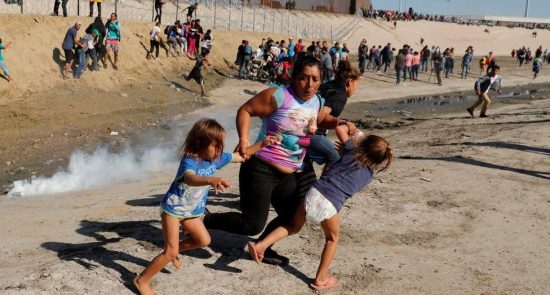Human rights December 8, 2018
Short Link:Mexican Refugees, the agony Over an American Dream
As thousands of migrants from Central America try to reach the US to seek asylum, many others are already waiting for a chance to cross the border from Mexico, the first step of an unpredictable and often traumatic process.
Ariana News Agency- On a cold morning this month, Rogerio Baltazar and his family arrived in Ciudad Juárez, in northern Mexico, carrying only two old school backpacks where they had put the few things that were now everything they had – some pieces of light clothing that would do little to keep them warm and, certainly of more value, documents to prove who they said they were.
They had left their tiny village in rural Guatemala two weeks earlier, risking it all in a perilous journey by bus, sometimes even on foot, and were clearly not prepared for the weather or almost everything else they found here.
Rogerio, the 30-year-old leading the four, was tired, longing for a shower, and a better coat, too. But that could wait. What really mattered was to keep going, one last time, cross the bridge over the Rio Grande, so close, and finally reach the United States. He planned to seek asylum there and with Cristina, his 20-year-old wife, and two sons, aged four and two, have another chance in life.
He did not know a word of English – in fact, he could barely read Spanish – or the name of a single city in the country he was desperate to get to. But “Si Dios quiere”(God willing) everything, miraculously, would work in their favour. “It’s a dream,” he said, “for my family, my sons”. They had come a long way and nothing would stop them. Yet the four were not going anywhere.
Things at the border were so uncertain that, every morning, the staff of Casa del Migrante, a Catholic Church-run shelter in Juárez, searched the region’s newspapers for reports about immigration. The most relevant were attached to a large mural in the always busy reception, next to posters explaining basic rights of asylum seekers which had been framed and permanently fixed on the wall.




